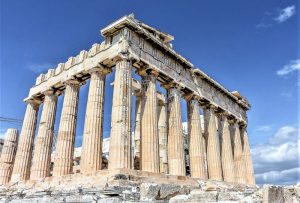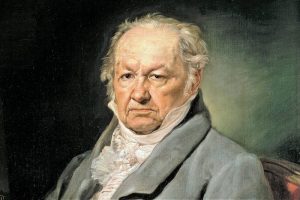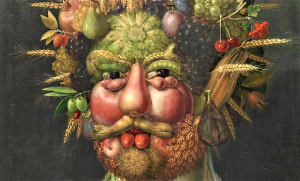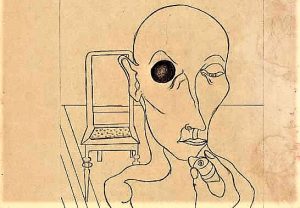Abstract expressionism
A new vanguard emerged in the early 1940s, primarily in New York, where a small group of like-minded artists created a stylistically diverse body of work that introduced radical new directions in art and changed the world's approach to art. Breaking with accepted conventions in both technique and theme, the artists made works on a monumental scale that rose as reflections of their individual psyches, and in doing so, attempted to access universal internal sources. These artists valued spontaneity and improvisation and attached the highest importance to the process. Their work resists stylistic categorization but can be grouped around two basic inclinations: an emphasis on dynamic and energetic gesture, in contrast to a reflective brain focus on more open color fields.
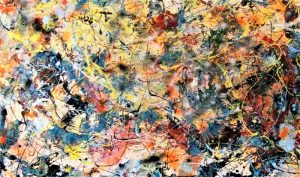
Related topics
Contemporary art, Fauvism, naive art, op art, pop art, Cubism, Dadaism, Post-Impressionism, suprematism
What is abstract expressionism?
Abstract expressionism is a style of art that has meant one of the main manifestations of the spirit of the 20th century. It replaces figurative representation with autonomous visual language with its own meanings.
About abstract expressionism
Abstract expressionism was a pictorial movement that took place in the twentieth century, which main characteristic is the spontaneous affirmation that the individual has through painting. It is a non-figurative art that does not adjust to the limits of conventional representation.
Characteristics
Its main features are as follows:
- It has a preference for large formats.
- It works mainly with oil paint on canvas.
- It uses abstract motifs, although figurative strokes also appear.
- They cover the surfaces to represent an open field without limits.
- It has a very limited chromatism, and black and white are used more.
- They represent features of anguish and conflict.
- They reject aesthetic conventionalism but have free and subjective expression of the unconscious.
- Value the accidental and have purpose intensity.
- The gestural stroke predominates in the expressions, in addition to a great dynamism.
- Spots and lines full of rhythm are used.
History of abstract expressionism
The term was first used in Germany by Russian artist Wassily Kandinsky in 1919, but was later associated with post-war American art.
The America of the 1940s, from which abstract expressionism emerged, was still fragile by the collapse of the world order produced by World War II. This influenced the country’s artists, who remembered The Great Depression and its aid programs, such as the Work Progress Administration.
The problem was that the two main artistic movements of the 1930s, consisting of regionalism and social realism, could not satisfy their desire to break with current thinking. In this, they were strongly influenced by the arrival of numerous modern artists who had lived in Europe, whose radical approach to art opened up a series of new possibilities.
Alfred Barr was the first American to use this term in 1929, and it was related to the works of Wassily Kandinsky. Robert Coates was an American art critic who popularized the term abstract expressionism when he applied it to similar artists such as Arshile Gorky, Jackson Pollock, and Willem de Kooning. The importance of these artists for the new American movement was already recognized in 1944 by Jackson Pollock himself.
Paint
Expressionist followers practiced the technique called Action Painting. They were looking for a way to involve spilling colors on large canvases in order to randomly create abstract motifs.
Other abstract expressionists, such as Mark Rothko and Barnett Newman, developed the Color–Field Painting, which was done by applying on the canvas large extensions of color that was subtly modulated. In Europe, a movement called Informalism developed in parallel and in the 1960s new styles and movements began.
Sculpture
Sculpture in abstract expressionism is often regarded as a revolution and included different sculptors who challenged the traditional conventions of the medium. Open structures are observed that challenge the heavy mass and volume generally associated with sculpture. Also, the technique adheres to unconventional and often sequestered materials, as well as to less common processes, such as welding.
Architecture
As far as architecture is concerned, materials that are minimally manipulated and materials from different origins are used in order to exploit the interaction that exists between physical characteristics. The application of painting in architecture is filled with marbling effects and thick brushstrokes to accentuate the literal character.
Artists
There are many artists who have dedicated their careers to abstract expressionism, one of the most important is Jackson Pollock who was a painter of American origin who stood out as one of the main exponents. He received an important influence from Thomas Benton and in the 30s, he also dedicated himself to Mexican muralism.
Most of Pollock’s paintings were lost, but some survived that allowed him to observe his personal pictorial language alluding to American aboriginal art, rites and myths, and the interesting world of dreams.
Works of abstract expressionism
Some important works of abstract expressionism were:
- Male and Female Philadelphia (Pollock)
- Stenographic Figure (Pollock)
- Mural University of Iowa Museum of Art (Pollock)
- Moon-Woman Cuts the Circle (Pollock)
- East wall (Conrad Marca Relli)
- Mural painting, no. III (Robert Motherwell)
- Woman in a forest (Willem De Kooning)
How to cite this article?
Briceño V., Gabriela. (2019). Abstract expressionism. Recovered on 23 February, 2024, de Euston96: https://www.euston96.com/en/abstract-expressionism/



